icon
password
Multi-select
tags
ID
type
status
slug
summary
category
date
Author
URL
The description of Silk Street Market in English Wikipedia stopped in 2009. Many foreign tourists still have unrealistic fantasies about Silk Street Market.
If you visited China ten years ago, or have planned to travel to China for more than 10 years, there may be a special shopping mall among your travel destinations. Its name is “Silk Street Market”.
This market, located along Chang’an Street in Beijing, less than 2 kilometers from Tiananmen Square, was once the best-known market for fake goods in the world. You used to be able to buy knockoffs of any brand of clothing, shoes, hats and bags in the world that you can name. Moreover, it sometimes delivers goods that exceed the quality of the genuine product at the price of the genuine 1/10.
It is so notorious that many foreign tourists regard it as a tourist attraction-despite moral condemnation of selling fake goods, tourists buy large quantities of fake goods to bring back to their own country.
The description of Silk Street Market in English Wikipedia stopped in 2009, when Tripadviser fragmented but incomplete records of the changes that have taken place in the mall. Many foreign tourists still have unrealistic fantasies about Silk Street Market-for example, they can buy all the fake luxury goods in the world at once.
But in fact, all this is a thing of the past, and if you visit Silk Street Market in 2020, you will be surprised how different it is from the legends once given to it in the English-speaking world.
Silk Street Market is like the Kowloon Walled City in Beijing, where the prosperity of fakes like performance art exists only in history, and now it is more like a giant Chinese gift shop. But that’s not a bad thing, so let’s take a look at what happened to Silk Street Market over the past 10 years.
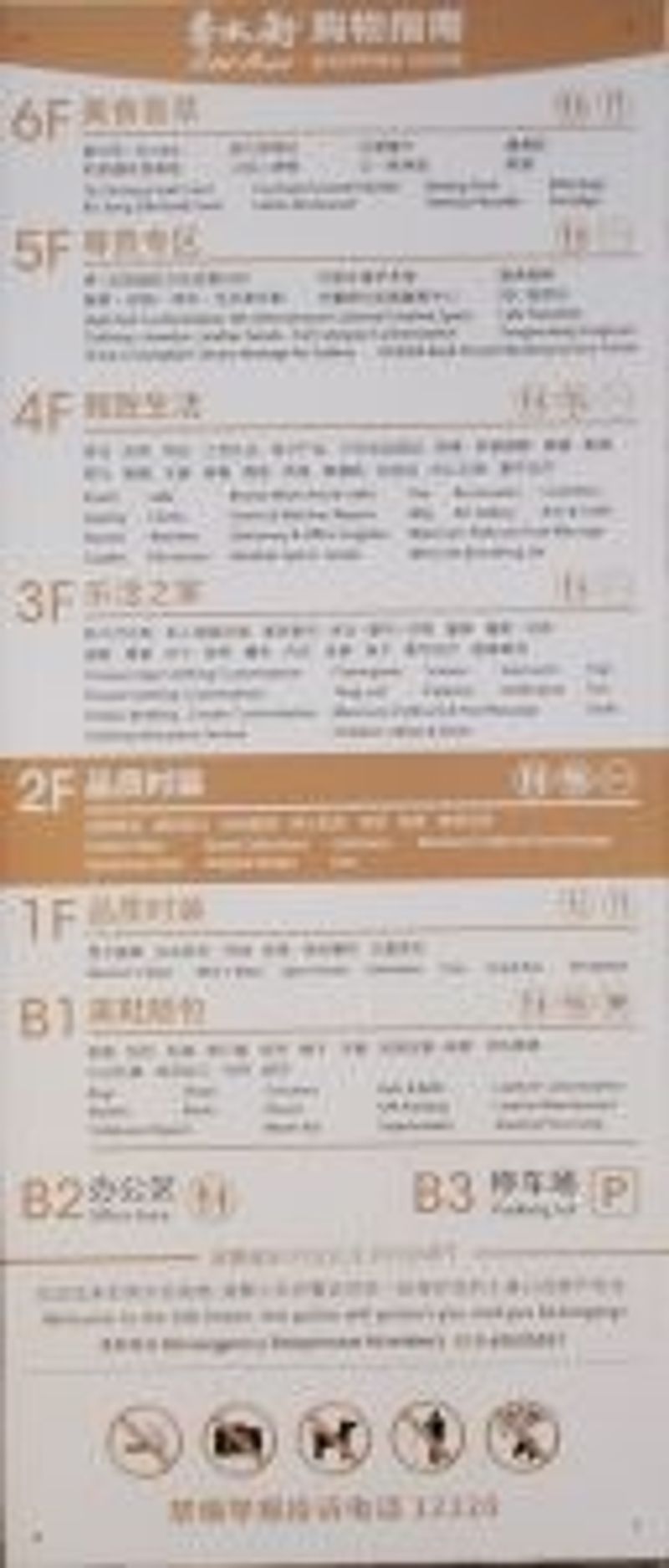
Silk Street Shopping Guide
For many foreigners, the former Silk Street Market is already very familiar. So let’s start with the relatively strange present.
Although China’s business has almost shaken off the impact of the COVID-19 epidemic, it is clear that Silk Street Market has not yet come out of the shadow.
The reason is simple. The main consumers of Silk Street Market are foreigners who come to Beijing for tourism or business travel. This has been the case for 10 years.
Hu Wenli, general manager of Silk Street Market said in an interview with the media on March 6, 2020, “according to the most optimistic estimate, inbound tour groups will not resume at least until June, which will have an impact on Silk Street Market.”
But it is clear that China has not reopened its borders to ordinary foreign travelers until October 2020. The impact on Silk Street Market can be imagined.
I visited Silk Street Market, on a weekday morning at the end of October 2020. In fact, it is in better shape than I expected. Although there are not many consumers, there are still have some.
Silk Street Market is more like a foreign-friendly mall than a pure fake clothing market today. I dare say that in Beijing, you will never find a shopping mall with such a comprehensive English sign as Silk Street Market, and all the shop assistants can speak simple English.
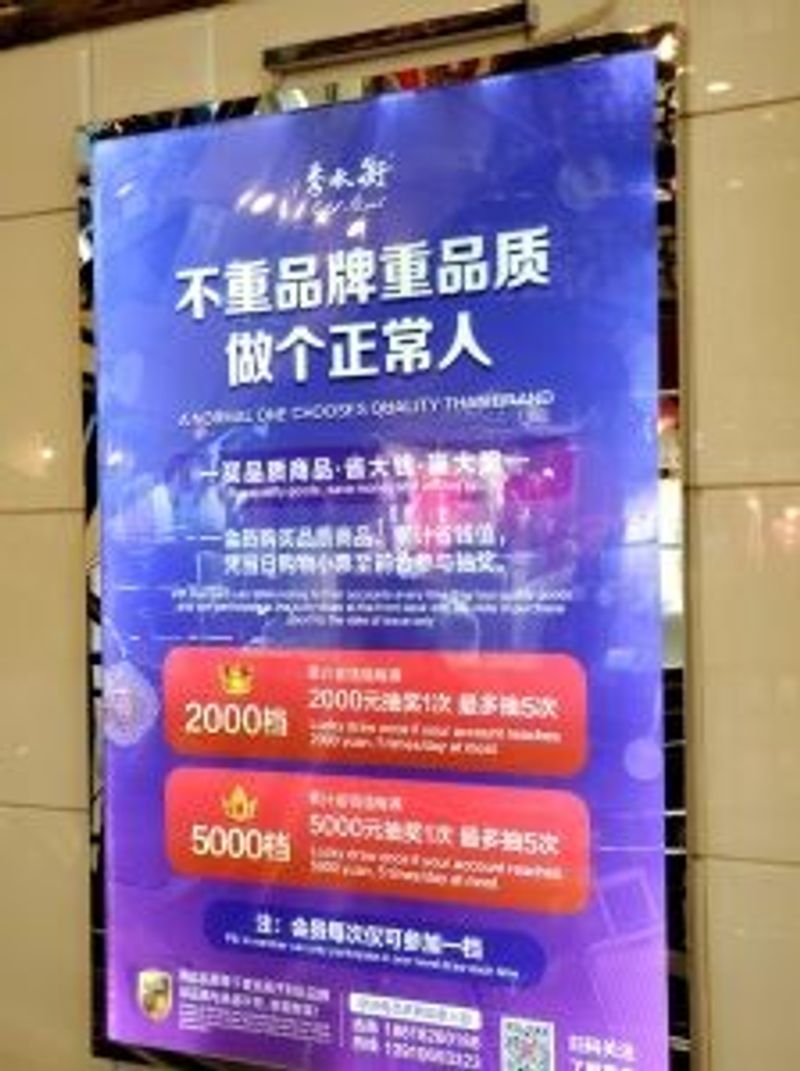
Many posters in the store say “A normal one chooses quality than brand.”
It sells some ordinary goods on the first and second floors. When I was hanging out here, I found that many Chinese elder female were shopping here, too. They seemed to be nearby residents. After all, there are no other shopping malls selling clothes near Silk Street Market.
2018, Silk Street Market experienced its last renovation and repositioning so far. After this update, Silk Street Market focuses on “high quality, not high brand”.
We have repeatedly mentioned that in the past five years, China’s consumer goods market has experienced a simultaneous “upgrade and downgrade”. Its logic is: if most of the world’s high-quality light industrial products affixed with the trademarks of other countries international brands are produced in Chinese factories, then why do Chinese factories sell directly with their own trademarks and remove the premium?
The same is true of Silk Street Market’s upgrade, which no longer sells counterfeit goods with the international brand Logo, but directly sells goods of good quality without any Logo. In most Silk Street Market merchants, you can buy brands that even the Chinese don’t know, or have no brands at all, but their quality seems to be much better than those counterfeit products before.
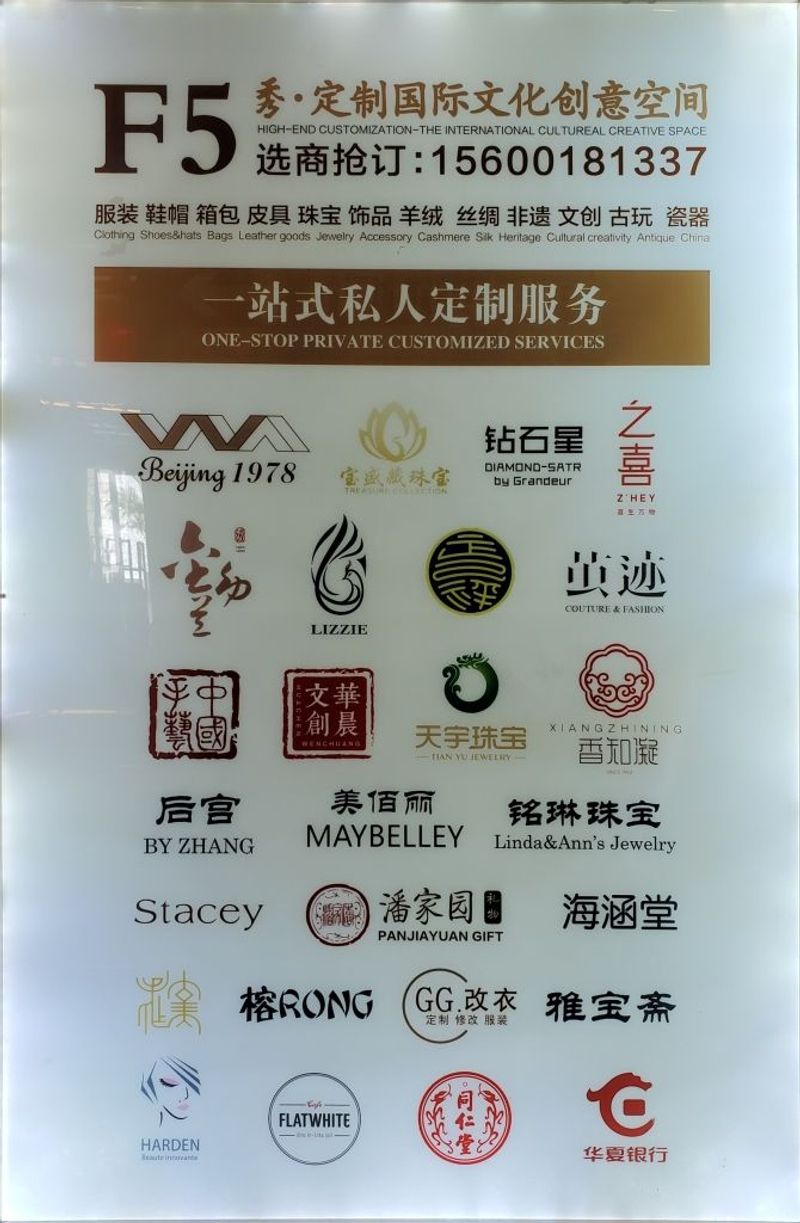
Another change is that Silk Street Market is starting to focus more on buyers rather than independent consumers. Logo-free goods sold in Silk Street Market are, to some extent, a kind of “capability demonstration”. If you are an overseas buyer, you can see the shoes or clothes you want here, and then place a large order with the merchant to produce goods of your own brand. As a result, you can see a slogan in almost all stores: provide premium customization services.
Starting from the third floor, local female consumers have disappeared. Because the third and fourth floors sell goods that “Chinese local residents” rarely buy, such as Chinese handicrafts, silk and wool clothes, porcelain, calligraphy or other toys with Chinese characteristics.
In the fourth floor sales area of Tang clothes, I saw an old couple talking about buying a children’s Tang clothe for their grandson or granddaughter. Modern Chinese will never wear Tang clothes in their daily life, even on traditional Chinese holidays, but Tang clothes are still one of the options when they take commemorative photos.
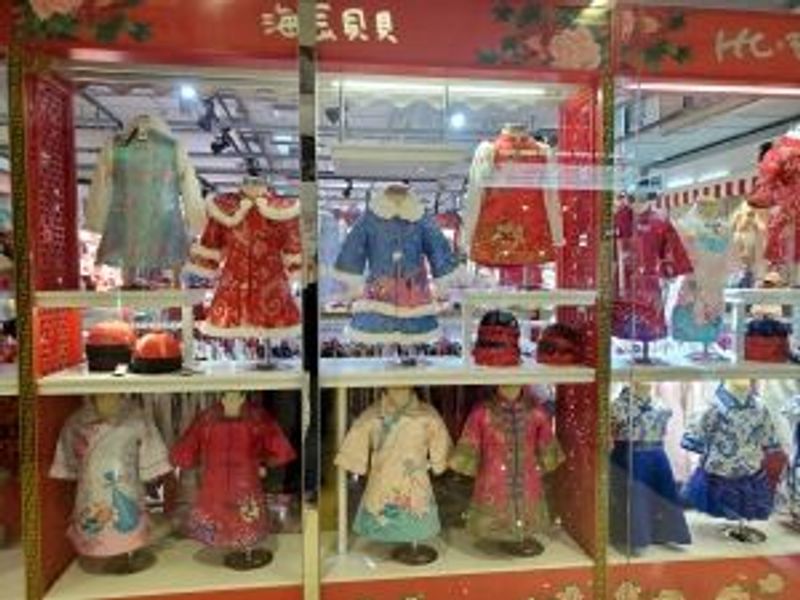
There are a lot of Tang clothes here.
This makes Tang clothes different from other clothing, is a low-frequency sales of goods. In any other shopping mall in Beijing, you can only find one Tang clothing store at most. Even for local residents, you can’t compare and choose Tang clothes in other shopping malls. But there are more Tang clothing stores here in Silk Street Market than ordinary clothing stores in ordinary shopping malls combined.
This has driven some local residents to shop here.
The fifth floor is the worst. There are few people here.
Its sixth floor, like many other shopping mall in China, is a catering center. There are many inexpensive Chinese, Western and Southeast Asian fast food here. Although my visit was not during mealtime, all the restaurants were open and none of them went out of business. I think it’s because there is a high-end office building nearby, Guanghua SOHO, where white-collar workers may come for lunch during their lunch break.
During my 30-minute stroll, I saw about five foreigners, but only one of them bought a handicraft-a traditional Chinese seal.
It can be seen that the epidemic has obviously affected the business of Silk Street Market. Because last year, the number of passengers here should be at least dozens of times that of the current.
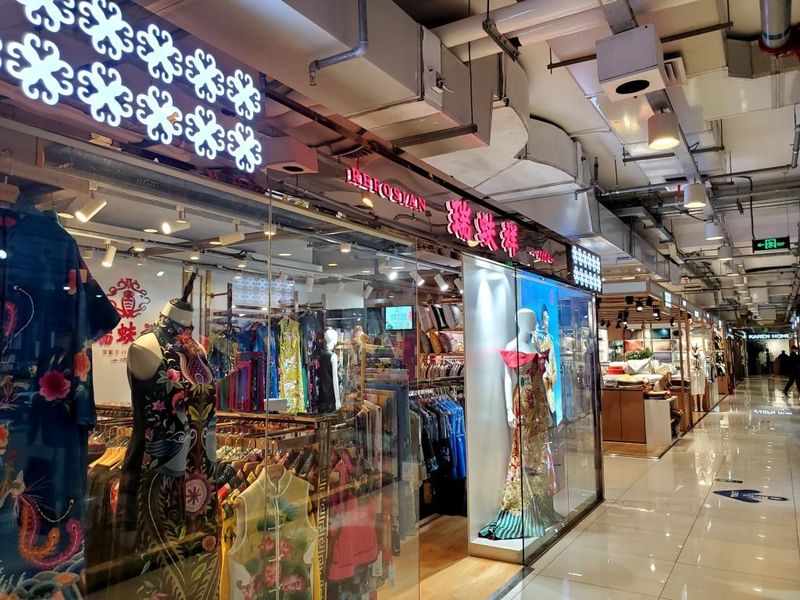
Chinese people seldom wear these traditional costumes except when performing. But for foreigners, they may want to buy them as gifts.
Earlier, Yiwu Commodity Market, another Chinese market mainly aimed at foreigners, officially launched its own e-commerce website, which provides a complete English version. In an interview, the head of, Silk Street Market mentioned that they would speed up the development of e-commerce business, but so far, there is still no news from it.
But in any case, the fakes have disappeared from the shelf, and there are rumors that you can still buy some by asking the clerk, but it hasn’t been verified. Of course, the prices of goods here are still inflated, you need good bargaining skills to buy the most affordable things here.
The Birth and History of Silk Street Market
In fact, for most foreign tourists who have visited Silk Street Market, their impression of Silk Street Market is not what it looked like at first. Because as early as 2005, that real “street” no longer exists.
The embryonic form of the Silk Street Market market was formed in the 1980s, where many street vendors gathered on a real Silk Street near the Silk Street Market Building now.
At that time, China had just begun to implement the policy of reform and opening up, the market economy was restored, and businessmen from all over the country came to the capital Beijing with their hometown specialties in the hope of making some money. But at that time, there were not so many shopping malls in Beijing for these people.
So they started selling on the street side of Silk Street, which is close to Tiananmen Square, so there are a lot of tourists. It soon gathered almost all the local specialties in China. Jianguomenwai Sub-district goverment has prepared for the establishment of the initial Silk Street Market, and welcomes the entry of these individual merchants.
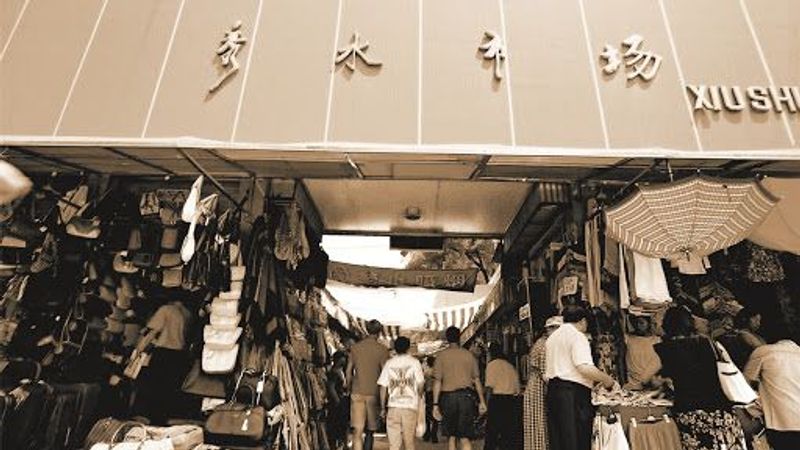
Xiushui(Silk) Street Market in 1990s
Before China fully opened its doors to ordinary foreign tourists, Silk Street Market was a well-known landmark of Beijing for Chinese tourists. It is easy to understand that in an era when e-commerce is still underdeveloped, if a Chinese wants to buy specialties from another province, the best way is to go directly to that province, and the second choice is to buy it in Beijing. There are only a few places in Beijing that sell specialties from all over the country at the same time, and Silk Street Market is one of them.
In the middle and late 1990s, the influx of foreign tourists changed the place. It was only then that Silk Street Market began to sell cheap fakes in large quantities.
On the one hand, with the development of commerce, Chinese consumers can buy goods produced all over the country in more ordinary shopping malls, and there are fewer local Chinese consumers here.
On the other hand, due to the lack of intellectual property protection in China at that time, it has become one of the few markets where fakes of all international well-known brands can be bought at once. This is very tempting for many foreign tourists-because in their own country, although there may be fakes, they can’t choose thousands of fakes like you do in a supermarket.
At that time, there were two main clothing trading centers in Beijing. One was the “Zoo clothing Wholesale Market” near the Beijing Zoo, and the other was “Silk Street Market”. Local residents of Beijing and buyers from surrounding cities mainly patronize the former, while the latter have begun to serve tourists and buyers from all over the world.
You are reading Panda!Yoo
A blog about modern Chinese culture and consumption trends. If you are interested in Chinese food, drinks, games, movies, novels, dramas, please follow us.
Join 1,565 other subscribers
This situation continued until 2005, when the local government decided to move the Silk Street Market into a building due to the proliferation of fake goods and the security, noise and pollution problems caused by street sales.
January 5, 2005 was the last day that Silk Street Market existed as a street open-air market, and newspapers in Beijing recorded that day with words and pictures. Many people braved Lesser Snow to come to the old Silk Street Market to express their nostalgia on the one hand and to buy those merchants’ goods cleared at a low price at the last time on the other.
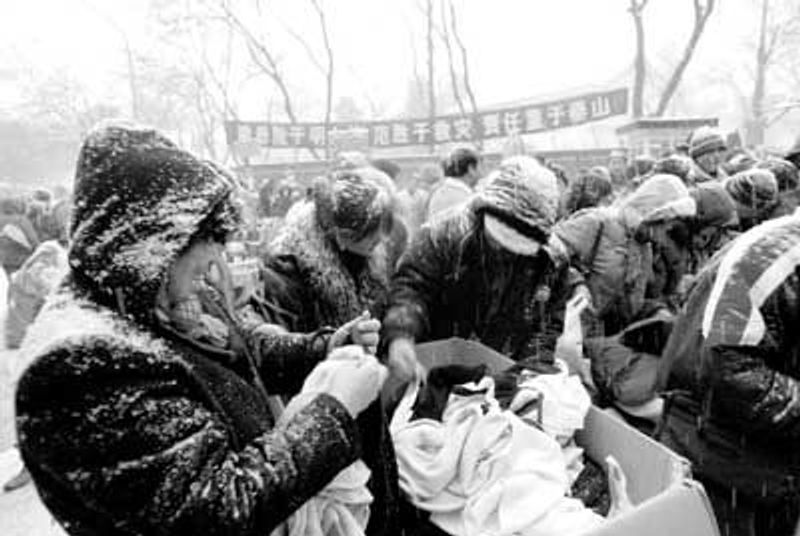
People snapped up the last bargains in the snow via 163
Miss Lin from the Philippines told reporters at that time that she had been to the Silk Street Market three or four times in the two years she lived in Beijing. She learned that Silk Street Market was open on the last day yesterday, so she came to buy more than 100 silk scarves in three big bags. “I like it here,” Miss Lin told reporters. “if it is torn down, I hope there will be a better market.”
At that time, most merchants chose to move into the Silk Street Market building, which was completed a year ago, the “Silk Street Market Building” that most foreign tourists have been familiar with in the last 10 years.
Like many similar migrations, Silk Street Market experienced a brief setback. This is understandable.
Many of the merchants who originally formed the open-air market, are individual businessmen who do not have a business license or even do not pay taxes at all, which is why they dare to sell fake goods. But when they move into a shopping mall, they need to register a company, pay rent and taxes, and it is easier for the Trade and Industry Bureau to inspect their goods. This caused many of them to leave Silk Street Market.
The new Silk Street Market has experienced 10 upgrades since it officially opened in 2005, some of which are decoration, others are the adjustment of business strategy and the withdrawal of fake goods merchants. After an upgrade in 2015, the number of fakes here was greatly reduced as it began to serve as a tourist attraction for foreign missions to visit.
In fact, Hu Wenli, general manager of Silk Street Market Market, said in an interview in 2017: “When new Silk Street Market first opened, there were 1,800 merchants. With the continuous transformation and upgrading, the number dropped to 1,200, then to 800, and finally maintained at more than 400. But each store has more space and a better shopping experience. “
[sociallocker id=”5614″]
Hu Wenli is not lying. Even in the 2020, when the world was affected by the epidemic, there are few businesses that have been completely closed. The decline in the number of merchants is not due to the virus, but indeed to the upgrading of business.
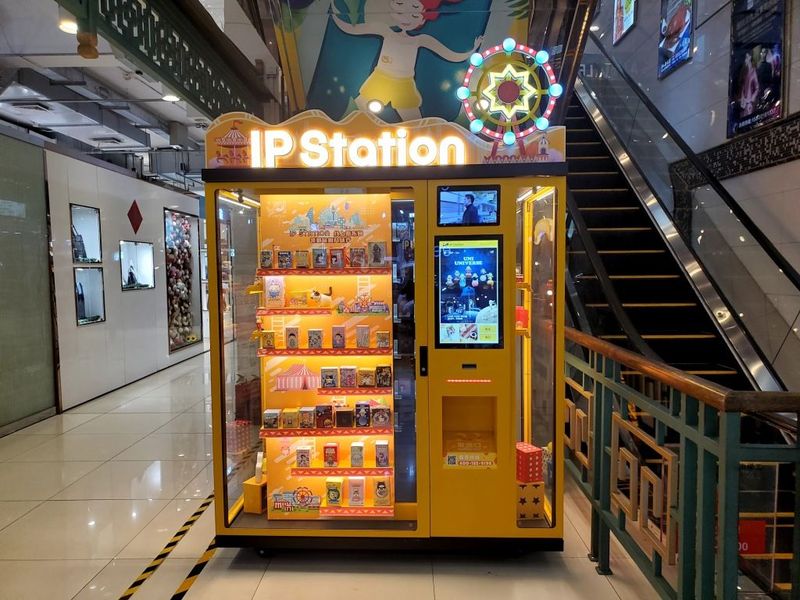
There are no other vending machines in Beijing shopping malls whose default language is English.
This is proved by the inaccessible fifth floor mentioned above, and according to previous reports, after the last renovation, it was actually converted into a “cultural experience center” where visitors can experience Chinese culture, Chinese clothing and enjoy some of the sights of other parts of China through VR. So when foreign tourists disappear, it looks worse than other floors.
Today’s Silk Street Market is like a Chinatown in China for foreign tourists, trying to piece together all the Chinese elements in one building. Because in fact, you should know that China is a country with a very vast territory, and the characteristic Chinese goods that foreign tourists want to buy are not always gathered together.
But it is more than that, as we said before, it has now added services for buyers and enterprises, which has brought new impetus to its growth. Of course, it all depends on the end of the global epidemic.
If you are a foreigner who is resident in Beijing and can speak Chinese fluently, then maybe the new shopping malls in Beijing, such as Shin Kong Place or Wukesong Arena, will be more attractive to you.
But if you are a traveler who only stays in Beijing for a few days, then Silk Street Market is still one of your choices.
[/sociallocker]
- Author:NotionNext
- URL:https://pandayoo.com/2020/11/01/changes-in-silk-street-market
- Copyright:All articles in this blog, except for special statements, adopt BY-NC-SA agreement. Please indicate the source!